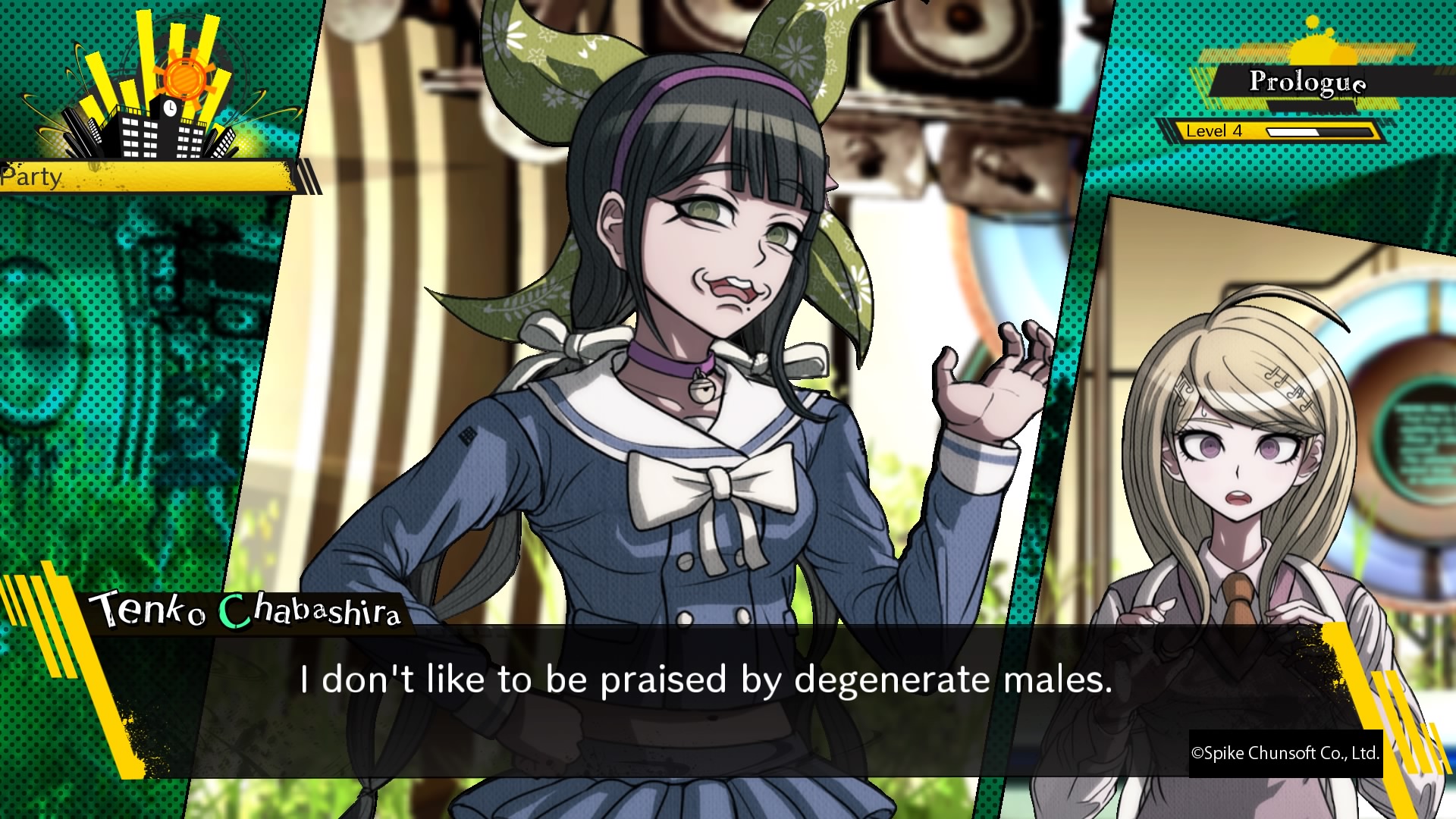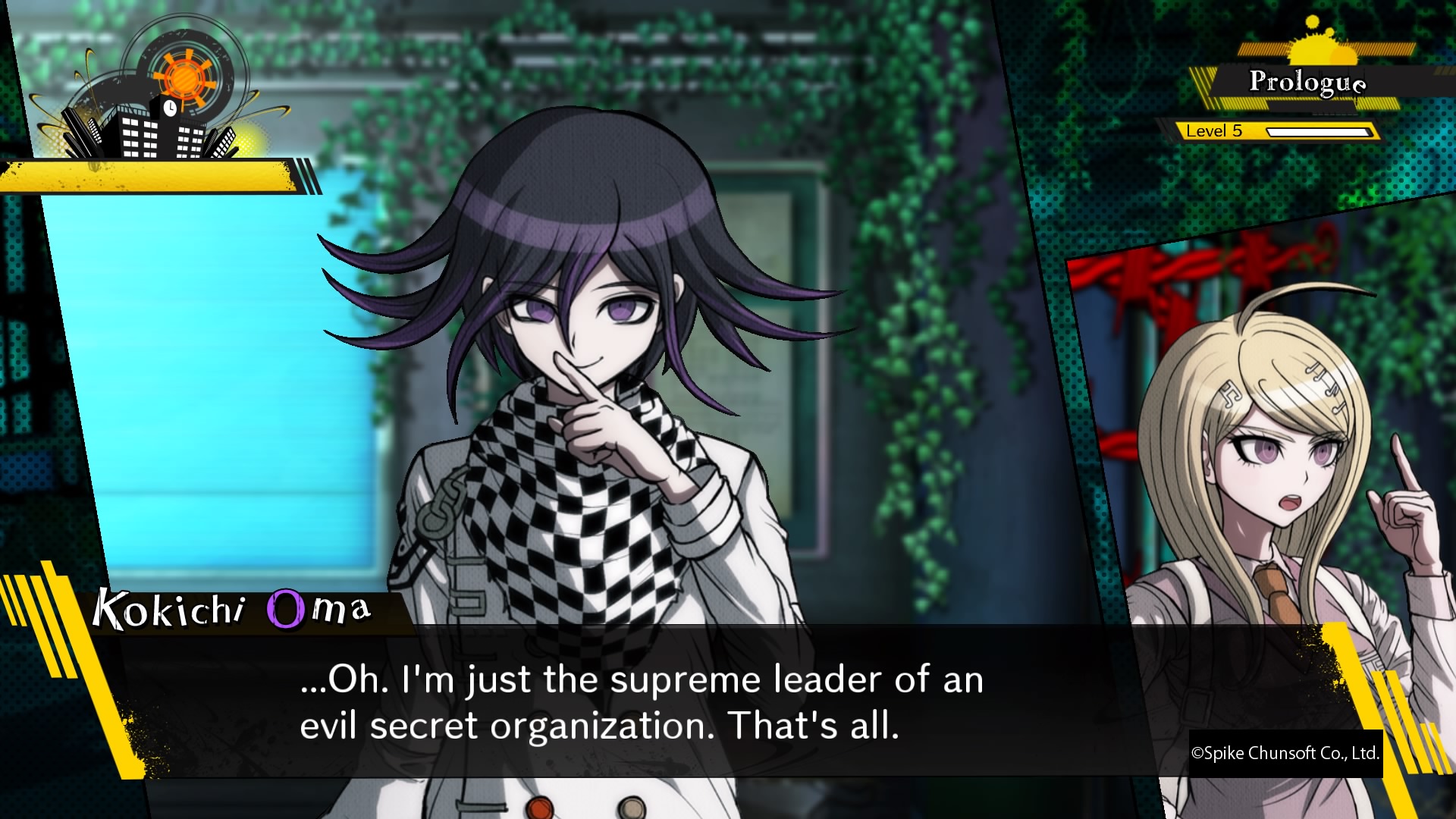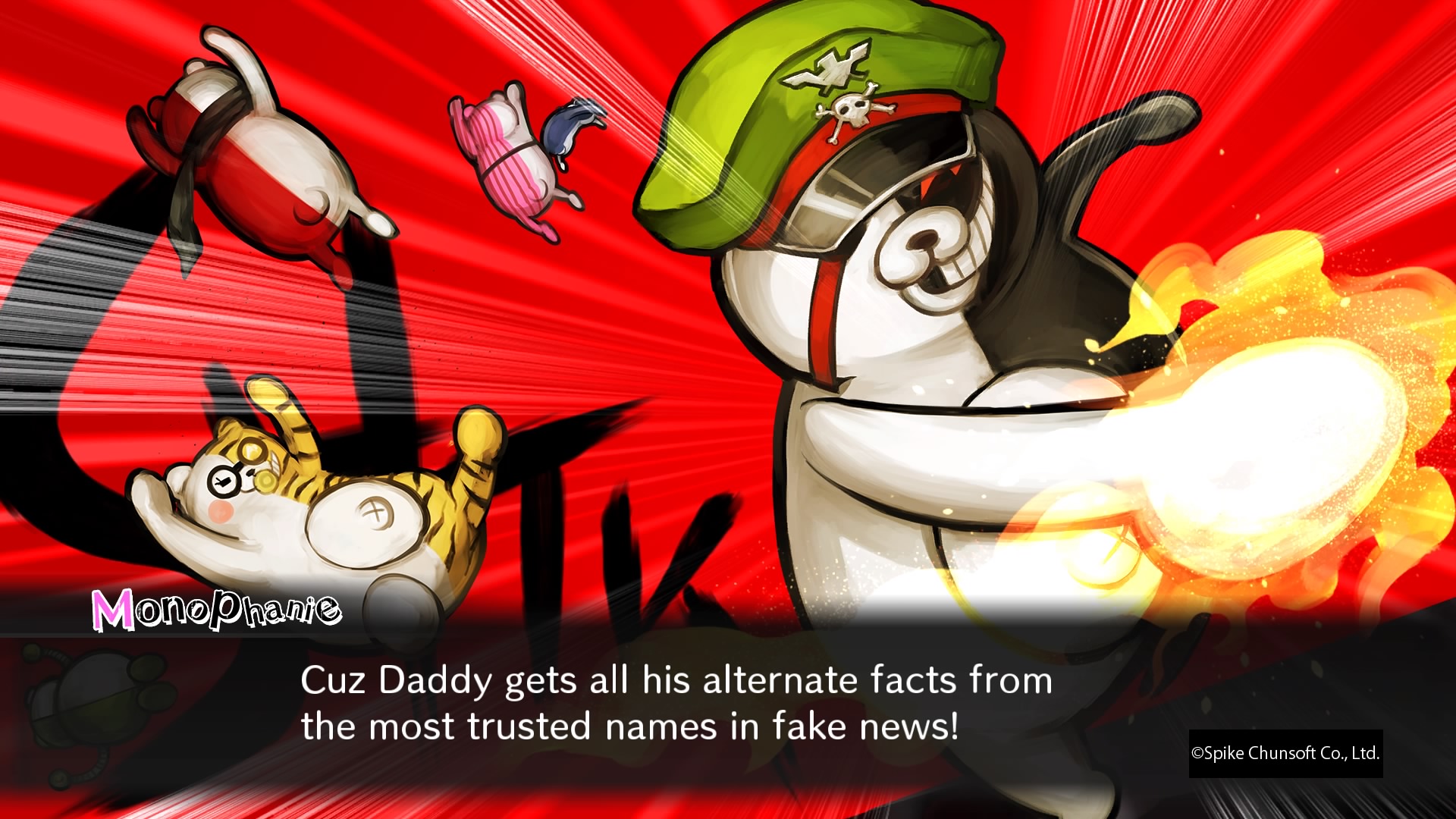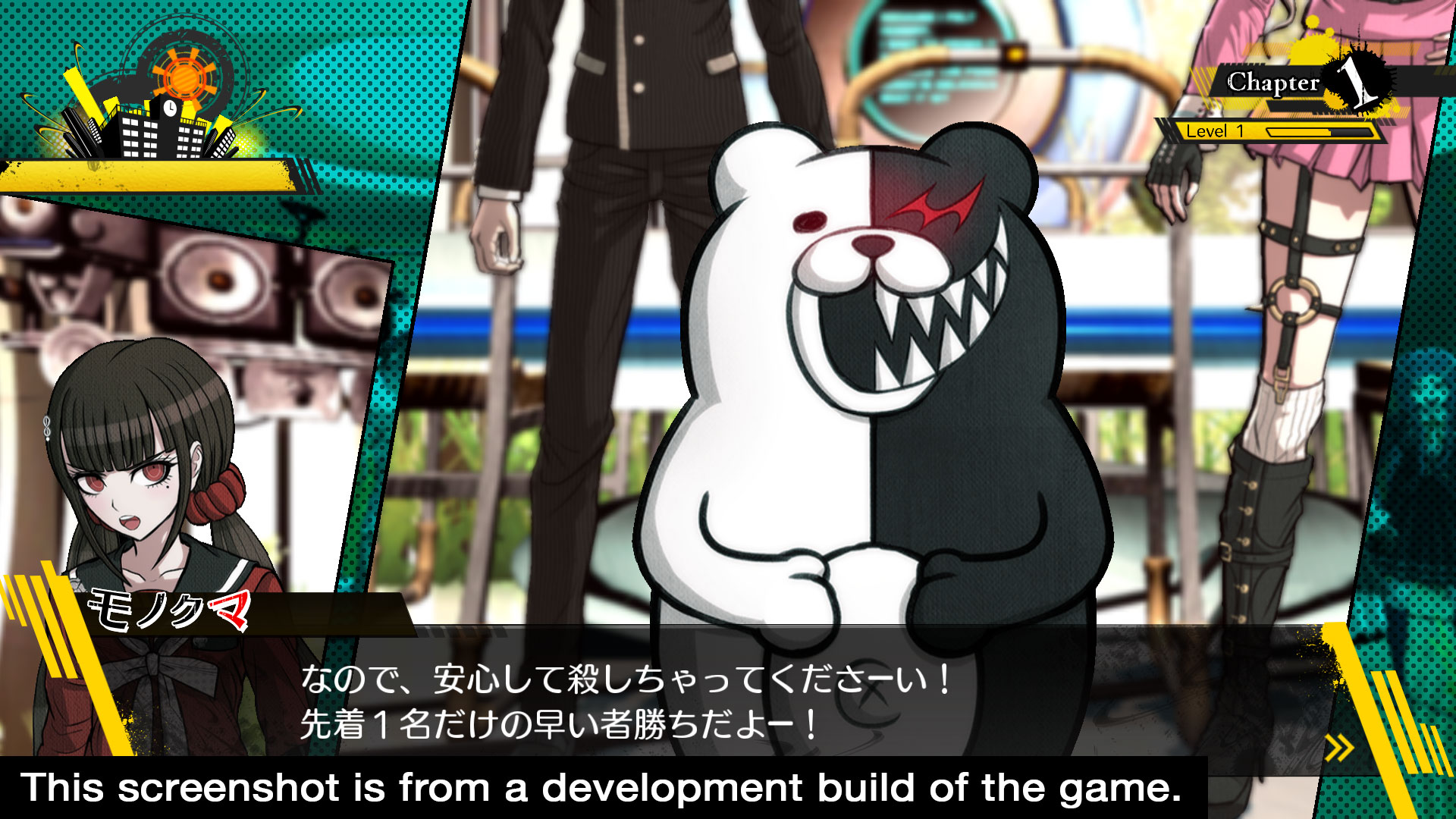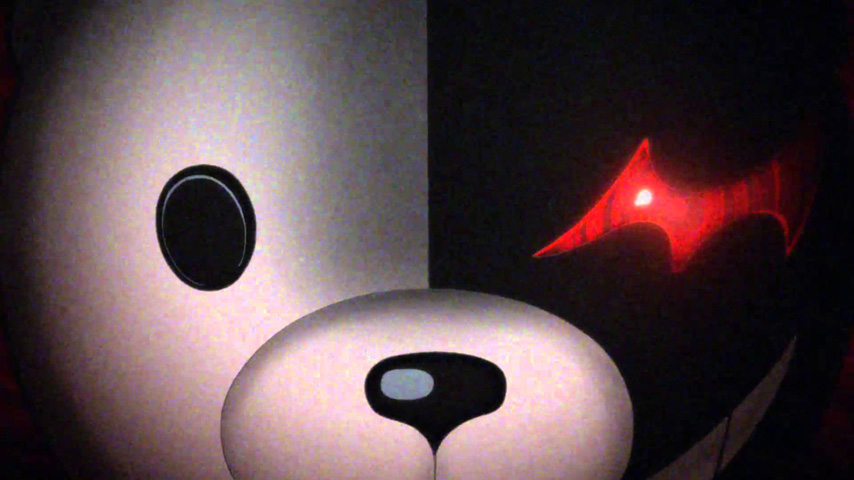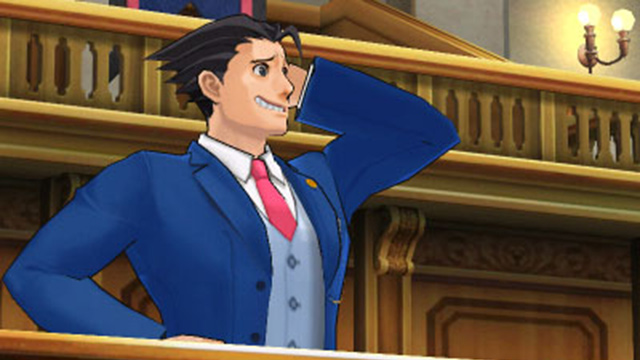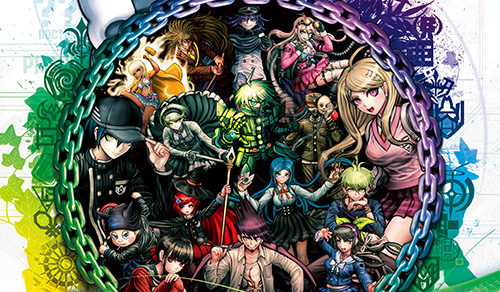
If there’s one thing Japanese writers know how to do well, it’s how to come up with killer ideas, and then push them to their extreme. That’s the basis of the Danganronpa series, which began in 2010 but didn’t make its way over to Western shores until 2014, and has since been nearly a yearly release here. Placing high school students in a high-concept situation that’s part Battle Royale and part Phoenix Wright, Danganronpa has made its mark not only with extreme plotlines, but also extreme characters and personalities. Danganronpa V3: Killing Harmony has a new cast, upgraded visuals and refined mechanics, but does this killer idea for a killing game remain as compelling as it did in 2014?
The basic premise of Danganronpa V3: Killing Harmony doesn’t stray too far from its predecessors. A group of teenagers, each recognised as an ‘Ultimate’ talent in their field (such as detective, pianist, even cosplayer), find themselves trapped inside the Ultimate Academy, missing key memories and with no clue as to how they got there. One thing that does become clear is that they are in critical danger, as the sadistic robotic plushie Monokuma forces them into a ‘killing game’. The rules? Nobody will be allowed to leave the school unless they murder a fellow classmate, and remain undiscovered as the culprit as determined by a vote in a class trial. If they’re found out, the culprit is executed. But, if they can trick their friends, then they’ll be allowed to escape while everyone else is executed.
It’s basically a scenario engineered to produce several murder mysteries within a self-contained space, with several chapters of intriguing whodunnits to investigate. The rules, as established and thoroughly explored in previous Danganronpa entries, haven’t really changed, so Danganronpa V3‘s story instead takes pleasure in subverting the killing game as much as possible. While there are a few straightforward murder cases to solve, the much more interesting chapters revolve around ideas and twists that stretch the limits of the central concept, to the point that it leaves the series very few places to go.
In fact, without spoiling too much, it’s explicit in the game that even the developers themselves are acutely aware of the tropes and limitations of the Danganronpa concept and are ready to move on, making Danganronpa V3 feel like something of an epilogue to the series. The characters once again are the standout of the title, with colourful personalities like the indecipherable Kokichi Oma, the Ultimate Supreme Leader, and Tenko Chabashira, the Ultimate Aikido Master, who has a vehement and largely inexplicable hatred of males. The translation is generally excellent, even slipping in quite a few dank memes here and there, although their handling of some of the more vulgar characters, like Miu, sometimes dials way too far into super offensive content, compared to the tone of the rest of the game.
It’s also a lengthy tale, with a prologue and six chapters each taking around five hours at least to get through – it’s a 30-40 hour visual novel that requires some serious commitment to keep up with the story’s twists and turns and keep all the relevant clues and evidence in mind. While the class trials move at a rapid fire pace, the story does take quite a while to get going, with the prologue alone feeling like it takes far more hours than it needs to to get the ball rolling, and pacing issues persist throughout the game.
As a visual novel, you’ll be spending most of your time reading page upon page of dialogue (which is sometimes supported during class trials and key event scenes by great voiceover talent, that ranges the gamut from cheesy to genuinely emotional). However, as usual the actual gameplay of Danganronpa V3 is divided up into three sections – Free Time, Investigations and Class Trials. In Free Time, you’re able to explore in 3D any of the unlocked areas of the school at will, but more importantly speak to any of the other students who you’re particularly interested in, and spend time with them. Not quite a dating simulator – this mechanic requires you to pay attention to their personalities and give gifts to unlock information about their backstories, and potentially even equippable skills to use in Class Trials. There’s also plenty of side events to trigger, mini-games to participate in and even a casino to rack up Monocoins to spend on gifts for friends.
Investigations begin after a murder occurs, and also require you to explore several areas of the school to collect evidence or testimonies as ‘truth bullets’ to use later in Class Trials. These trials are where the Danganronpa V3 shines head-and-shoulders above the rest of the series, as fast-paced debates among all the students play out where you literally have to shoot the words out of their mouths using the correct ‘truth bullet’. Mechanics from earlier games are refined for the better, including new weak-points in statements that award extra points for pinpoint accuracy, and the now unlimited-ammunition in the ‘rebuttal showdown’ sword duels. Even better are the ‘Debate Scrums’ – when the debate reaches a standstill, Monokuma breaks out the techno music and transforms the courtroom to be split down the middle, in a tense, if simplistic, mini-game to match arguments to answers. Less impressive is the ‘Psyche Taxi’ mini-game, where you steer a mental car through clues (represented by sexy silhouettes) inside your brain to arrive at the right conclusion. It doesn’t make a lot of sense, handles poorly and often goes on far too long.
By comparison, the free-roaming Investigation and Free Time sections remain as clunky as they were from the original’s PSP/PS Vita days, now hampered even further by a more vague ‘highlight’ feature, that’s meant to point out areas of interest on a screen, but is often unclear what you have and haven’t checked, or what constitutes a separate item.
Developed with the PlayStation 4 in mind, Danganronpa V3′s assets take full advantage of the extra resolution and power on offer. No longer appearing upscaled like Danganronpa 1+2 Reload, the pop-art styled character designs are crisp as anything, with subtle changes in line-work to distinguish different characters even noticeable. Environments are more realistic, grungier and more hostile, but are contrasted against neon colours, like blood represented by bright pink. Many famous music tracks from previous games also return, with new revamped remixes that remain as catchy as ever.
Danganronpa V3: Killing Harmony is mechanically the most refined game in the trilogy of Danganronpa visual novels, and its concept and story still prove to have quite a few surprises and twists to keep you on the edge of your seat – and in terms of murder mystery bang for your buck, it’s hard to go past. However, after four games, an anime series and several books, it is starting to wear a little thin, which is a fact not lost on the developers. I wouldn’t be surprised if the series comes to a close here, which is fine with me. Danganronpa V3: Killing Harmony is a crazy, bold and beautiful delve into the horrific world of murder and intrigue.
- Another compelling set of high-stakes murder mysteries - Vibrant, crisp visuals and catchy soundtrack - Refined class trial mechanics - Lengthy game with plenty of bonus modes
- Narrative takes a while to get going, and pacing is an issue - Exploration is still a little clunky

